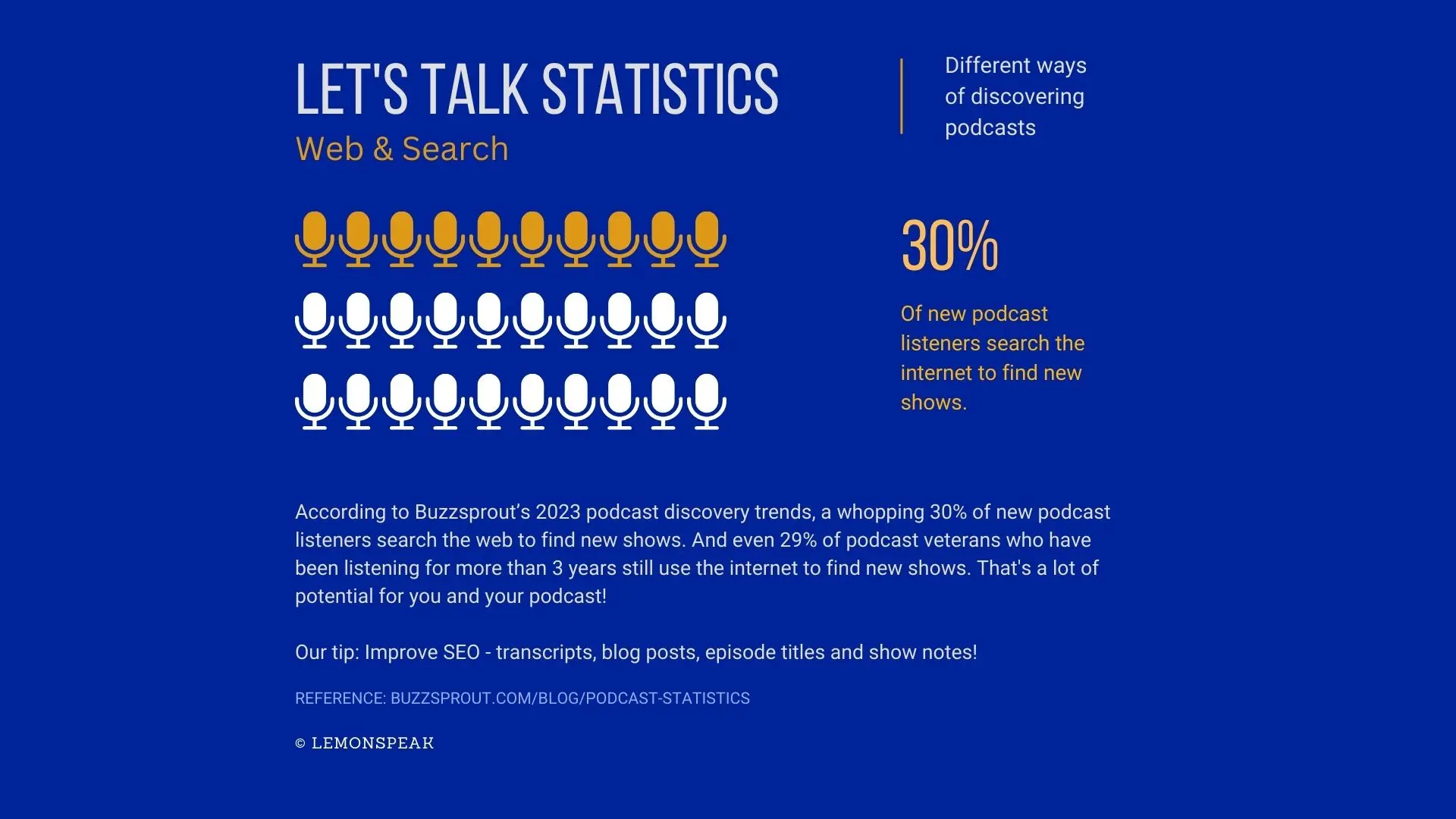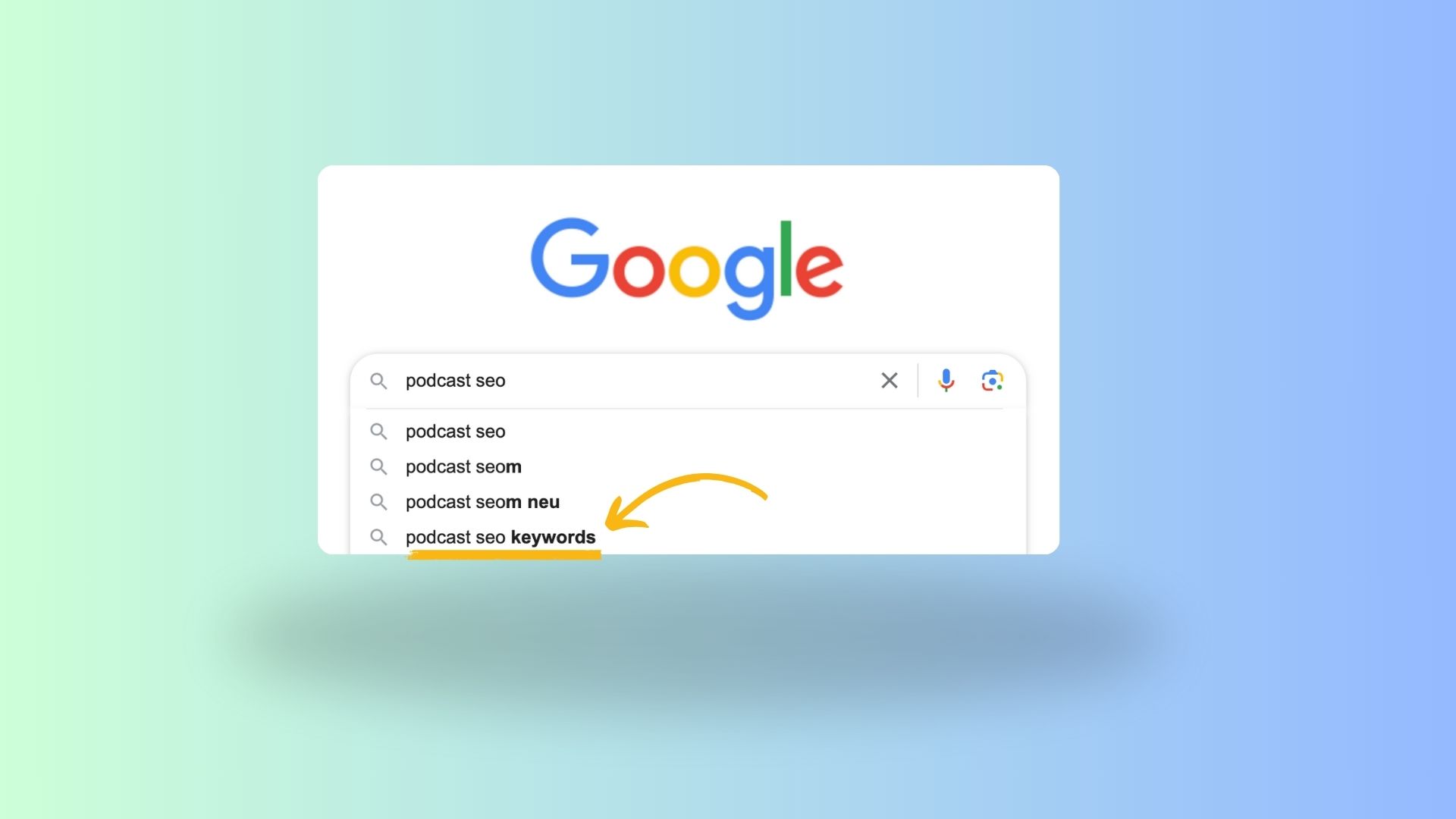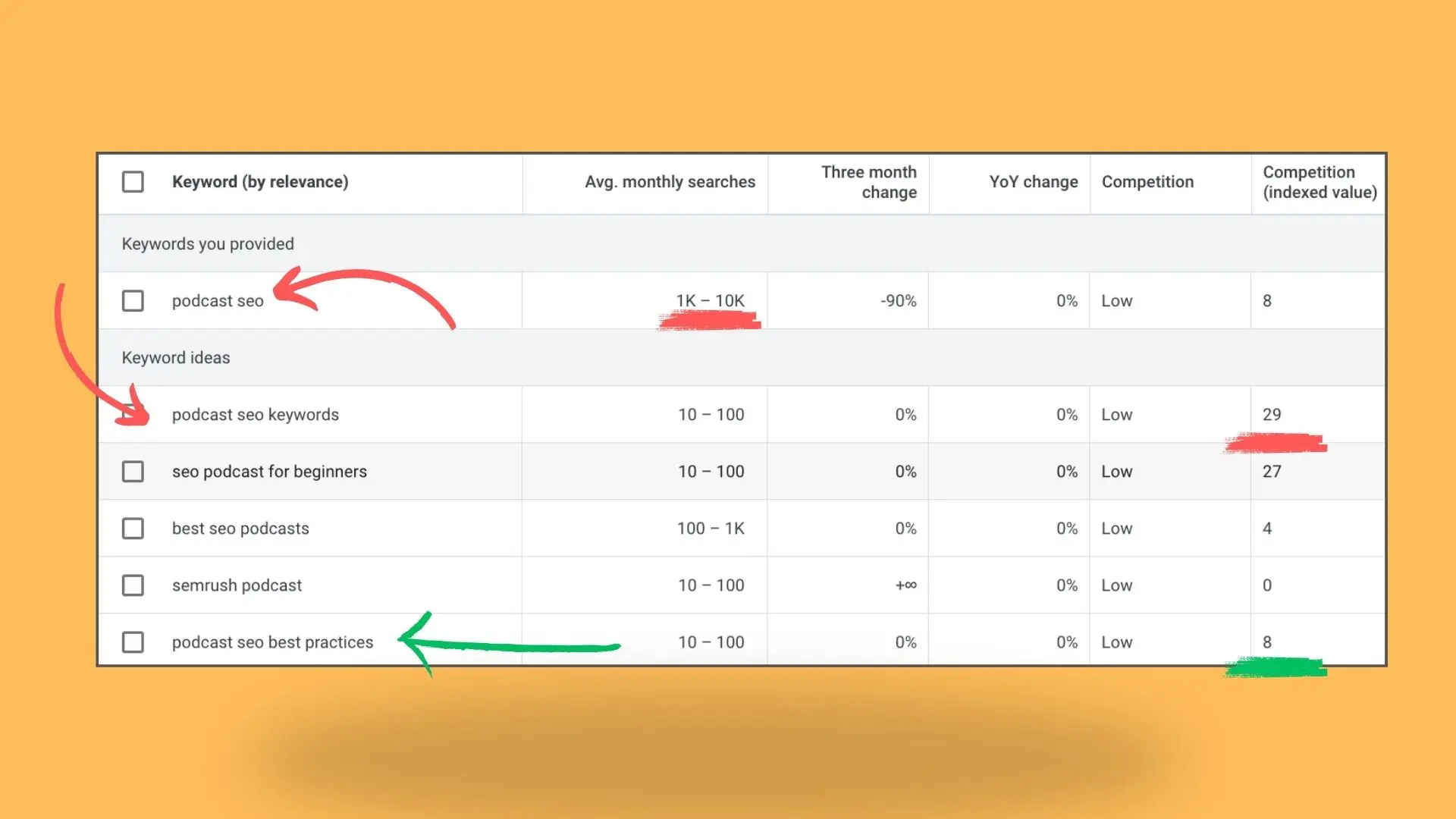
Podcast SEO Best Practices
07.02.2024
Do you really need SEO for podcasts? Isn’t it all about YouTube shorts and TikTok? No, it’s not. According to Buzzsprouts, a whopping 30% of people use a search engine to find a new show.
Our best practice and tip for you: Aim for long-tail keywords and include them in your recording.
Take a look at this statistic:

See the potential? Let’s dive in!
Why is a transcript helpful for SEO?
Well, now that that is out of the way: What exactly does a transcript have to do with SEO? SEO refers to how attractive a piece of content is to a search engine. A search engine reads the content on your website from time to time and indexes the pages.
The better your content answers a user’s query, the more likely it is that your website will be returned as a search result. Search engines rely mainly on keywords and backlinks to determine how well content matches a user’s search. Keywords are really just the words you type in your browser when you search for something.
The problem
The problem with your podcast: It’s just an audio file and its content can’t be read by a search engine. So all your precious recorded words are hidden from a search engine. By creating a transcript of your episode, you reveal the content to a search engine and it’s now possible for them to display your website to a user looking for a new podcast show or information they’re interested in.
But it doesn’t stop there: You need a way to find out what keywords people are currently searching for. It’s not very helpful to ask ChatGPT to come up with good keywords because it’s not connected to a system that can look up trending keywords. What ChatGPT does is come up with keyword ideas that it thinks could potentially perform well. However, you have to look them up for search volume.
How to find good podcast SEO keywords
Google suggestions
A much simpler approach is to go to Google and start typing in what a user might search for if they wanted to know more about the content of your episode. You will see Google’s autofill and this will give you an indication of what people are currently searching for. This will give you a few ideas and you can write them down.

Go to the Google Ads Keyword Planner
Then go to Google Ads Keyword Planner and type them in to see the search volume for them. You may have some keywords that have almost no search volume (0-10), forget them. The next stage would be 10-100 and then 100-1000. This is a very good number to watch out for, because if your keywords have a search volume of 100k-1M for example, it means that there’s a lot of competition and it can be difficult to rank for them.
The more competition, the harder it is for you. On the other hand, the less competition, the better for you. So if you’re new to podcasting and SEO, I’d recommend looking for 10-100 in search volume for a keyword, that’s your sweet spot.
Find long tail keywords
In addition, try to find a long-tail keyword. Let’s say you have a podcast about podcasting and SEO. It covers all the important things we talk about on this blog. You go to https://ads.google.com/ and start typing “podcast seo” into your keyword planner. This is what you’ll get:

Long tail keywords are keywords that are a combination of more than one word, e.g. instead of choosing “podcast seo” we aim for “podcast seo best practices”.
- You can see that “podcast seo” has a great search volume but as I said at the beginning, we want to target keywords with smaller search volumes.
- So the next one would be “podcast seo keywords”, however, compared to our last one “podcast seo best practices” it has a higher competition value. I recommend you see those values as approximations and that they are not set in stone. For example, I am suspicious that the competition value of “podcast SEO” is very low, but it would also be worth trying.
- I want to make sure it works, so I go with the last one in green: “podcast seo best practices”.
Long-tail keywords are often a good chance to rank for. You can also search for W-questions, which are also often used as keywords. For example, “how can I increase SEO for my podcast?”
How do long-tail keywords work?
Ahrefs does an amazing job of visualizing the power of aiming for long-tail keywords. The original article for the following image can be found on https://ahrefs.com/blog/long-tail-keywords/.
I can only recommend reading that article in depth because the principle of SEO is the same for podcasts or websites.
So what the following image shows is that there are only a few (less than thousands keywords) for a topic that are very popular, meaning they get the most search volume. However, there are millions to billions of keywords that are still powerful to target, you just need to aim for more than one.

Apply the results to your podcast
Go and find 3-4 keywords which are in a sweet spot. Once you have them, weave them naturally into your episode. Yes, while you are recording. By doing this, your generated transcript will contain those keywords, ensuring that you get the most out of it.
Now, we can take it a step further. Search engines love structured text, which you can provide by creating a blog post!
Our experience has shown that the most important part to understand here is that you don’t need to have those keywords repeatedly spread throughout your blog post, but to have them in your title and possibly in the introduction of your blog post again.
As search engines appreciate structure, a good place to have other keywords would be in the subtitles. The most potent keyword should be in the title. A title should be served as an h1 tag in HTML, but if you have your website somewhere with a visual editor, it is very likely that they will use that structure behind.
Doing your own research will bring you to claims that you need at least 1500-2000 words for good SEO. That is outdated. Instead, put yourself in the shoes of an internet user who searches for something. Whenever a person searches, there is a clear intention. The results can vary according to the type: entertainment, education, facts, or a quick lookup. But all of them have in common that Google tries to map websites, and also blog posts, to answer an intent.
For example, someone googling “Podcast SEO best practice” clearly wants to know the best approach for good SEO. That’s why we answer your question right at the beginning. It wouldn’t matter to us if the article ended up with 500 words as long as the user intent is clearly answered. I recommend that you do the same with your blog posts. If you talk about a particular topic on your podcast, provide a “tldr” (too long didn’t read) at the beginning. That reduces the risk that a user bounces off your website which wouldn’t be in favour for you.
These are the basics of podcast transcript SEO.
Call-to-Action
LemonSpeak makes it really easy for you to create that transcript and a blog post. We recommend having your own domain if you’re serious about your podcast and using a visual editor to create the website. Using a subdomain of a podcast hosting service means you’ll be dependent on them, leading to vendor lock-in if you want to move to another host.